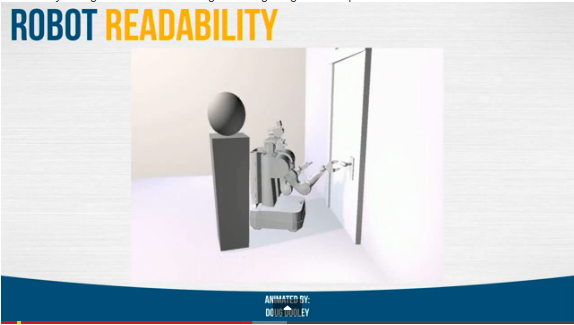What’s the hidden link between SCHAFT, a Japanese maker of muscular robots, Holomni, a Mountain View, Calif.-based smart wheel designer, and Bot & Dolly, a San Francisco firm that made next-gen studio gear for the film Gravity? All have been secretly acquired inside latest months by Google because the net giant brings together its plans for a robotic future.
Perhaps as a response to Amazon’s frankly ridiculous flying-drone delivery “plans” (a terrific PR boost ahead of Cyber Monday), Google has decided to take the wraps off its corresponding – and infinitely more workable – vision. In an interview with the New York Times, Andy Rubin recommended Google’s newest “moonshot” involves robots for the production plus logistics markets.
Andy Rubin was the man behind Android until March of this year, when he unexpectedly stepped down to take on a mysterious new role within the company. Now we know what that role entails.
Rubin wasn’t terribly specific in his NYT interview – indeed, it appears Google hasn’t even figured out yet whether to continue the effort in-house or angle off a subsidiary. Work takes destination inside Palo Alto plus Japan, plus Rubin is hiring roboticists plus diverting many Googlers off their existing jobs.
The article suggested Google’s robots could assemble electronics and also take on home delivery, perhaps in conjunction with Google’s existing driverless car project. There are doubtless further applications on the boil, too, and the best shot we outsiders have of piecing together that future is look at the firms Google has bought for its robot play:
- SCHAFT was developing humanoid robots (pictured above) that can carry heavy weights.
- Holomni made powered casters for vehicles that can roll in any direction.
- Bot & Dolly‘s IRIS robot platform controls movie cameras with high precision and also automates much of the set.
- Autofuss was Bot & Dolly’s sister company (so probably came as part of that package). It focused on “design based media and visuals” that involve “machining, engineering, camera, saws and software”. The firm made a launch commercial for Google’s Nexus 5 smartphone.
- Meka made humanoid robots for researchers.
- Redwood Robotics was working on robotic arms for the manufacturing and distribution sectors.
- Industrial Perception worked on robotic vision and artificial intelligence, again for the logistics sector.
Google’s desire to get into manufacturing comes as a surprise. Logistics is less of a shock. Whereas Amazon’s putative drones are an impractical idea — they won’t be able to carry much weight, and the economics of sending them out on a per-parcel basis don’t even begin to add up — it does make sense to imagine an autonomous vehicle driving down the street, with humanoid robots trundling out to make deliveries along the way.
It’s a scary vision on many levels (from Terminator-phobia to concern for yet more thousands of individuals being put from work) yet it really is at smallest workable.
Here’s a video of Google human-robot interaction (HRI) researcher Leila Takayama, formerly of Willow Garage, speaking at our recent Roadmap 2013 conference:
